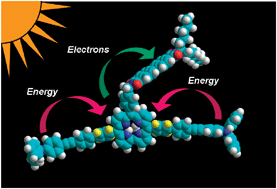Photoactive corrole-based arrays†
Abstract
The collection and conversion of light energy into chemical energy is based on the use of molecular structures of various complexity, where the absorbed light energy is first converted into an excited state able to undergo energy or

- This article is part of the themed collection: Jean-Pierre Sauvage

 Please wait while we load your content...
Please wait while we load your content...